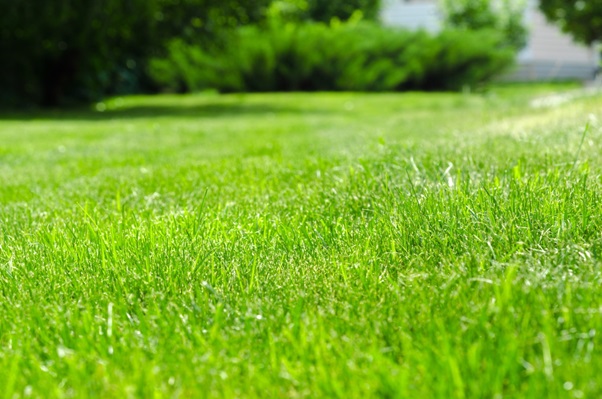Did you know a maintained lawn can boost curb appeal? If you want to learn lawn maintenance tips, we can help.
In this guide, we’ll go over lawn care steps to take.
Want to learn more? Keep reading.
- Don’t Forget to Mulch
After you mow your lawn, you don’t need to bag up the clippings. Instead, you can leave them in your yard. The grass clippings will decompose and add essential nutrients to the soil.
Is your lawn full of weeds? Your clippings will also be full of weed seeds. If you don’t want new weeds, then bag your clippings until you have controlled your weed problem.
- Aerate Your Lawn
Grass needs both water and sun to grow well, but it also needs plenty of air. If you notice the soil has become compacted, you’ll need to aerate your lawn.
Aerate your lawn with a gas-powered aerator or push aerator. The aerator will let water, nutrients, and air penetrate the roots of your turfgrass.
- Don’t Cut Too Much Grass
Do you give your lawn a short cut so you won’t have to mow as often? You could harm your lawn if you cut the grass too short.
Don’t cut more than one-third of the length of the grass. Otherwise, the grass will get stressed, making it vulnerable to disease and blight.
During the hottest months, you can protect the grass from drying out when you cut it at a higher length.
- Don’t Water Your Grass Too Often
Make sure you aren’t watering your lawn daily, especially during a drier summer. Shallow and frequent watering will cause shallow roots and a weak turfgrass.
Instead, water your grass less frequently but more deeply. Occasional watering will help the roots grow deeper, and your grass will get stronger.
- Make Sure You Test the Soil
Remember to test the soil every year. This way, you’ll know the pH level of your soil. A healthy pH level is between five and seven. If your soil has a pH level over seven, it’s too alkaline.
You can add sulfate to the earth to make it more acidic. If the balance is below five, it’s too acidic, so you’ll need to add lime.
- Fertilize Your Lawn
Your soil isn’t able to provide the nutrients your grass needs for the long growing season. Fertilize your lawn.
Determine what kind of grass you’re growing. Cold-season grasses will need a heavy fertilizer in the fall. Use lighter fertilization in the spring. Warm-season grasses need to get fertilized in the spring.
- Sharpen the Blades on Your Mower
Make sure your mower blades remain sharp. A dull blade can rip the top layer of the grass instead of cutting it. Your lawn won’t grow well after and will appear ragged.
- Don’t Forget to Seed
Most lawns will need reseeding to thicken the lawn or fill in any bare patches. Seeding is successful in the spring, yet growth will take a longer time if the temperature is cold.
Fall is another great time to seed. Autumn seeding will give young turfgrass the chance to grow before winter.
- Use Compost
You can feed your lawn by adding a layer of compost. Compost will add organic matter into the soil, and your property will be healthier.
Add compost to your lawn at the end of the fall. This way, your grass has the wintertime to break down the compost.
- Monitor the Weather
A weekly routine for chores is a great way to maintain your home. Yet, you can’t have a fixed schedule with your lawn care.
Instead, pay attention to the weather. This way, you can change your watering and mowing schedule as the weather changes.
You don’t need to water your lawn if it rained a day ago. Don’t mow the lawn if the grass is still wet. You’ll also want to cut less frequently if your area’s experiencing a drought.
- Use Herbicides
You can prevent weeds from growing by using a pre-emergent herbicide. This product will control crabgrass and other problematic weeds by stopping the seeds from sprouting.
Use the pre-emergent herbicide in the spring.
- Train Your Dog
Do you have a dog? If your dog likes to spend time running around the yard, your lawn will begin to show it. Dead and yellow spots are signs. The nitrogen in your dog’s urine causes these spots.
Try to encourage your dog to use one spot in the yard. You could create a mulch area where your dog can do its business.
Train your dog as you would house-train them. Walk your dog out to the area and give them a treat for good behavior.
- Water Your Lawn in the Morning
One of the most beneficial times to water your lawn is before the sun rises. This way, the sun will help dry your grass. If you water at noon, the water will evaporate before sinking into the soil.
Nighttime watering could lead to prolonged water on the grass blades. Make sure you water your lawn in the early morning.
If you want to learn more, check out Franzwitte.com.
Now You Know More About Lawn Care
We hope this guide on lawn care was helpful. Now that you know how to take care of your lawn, make a checklist. This way, you can keep your lawn looking healthy and groomed.
Browse our other helpful resources on home, real estate, and more.












